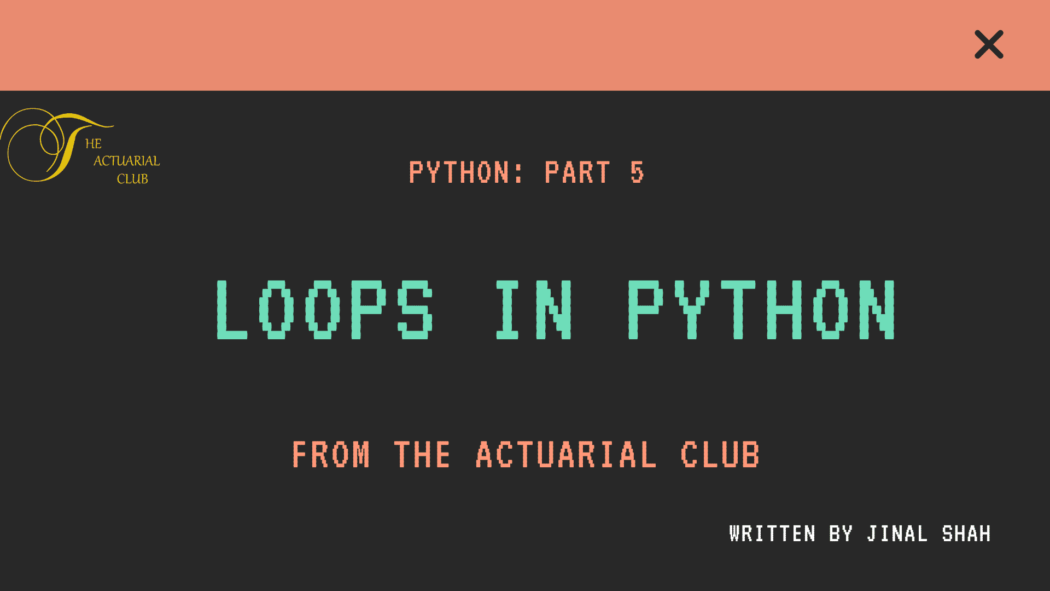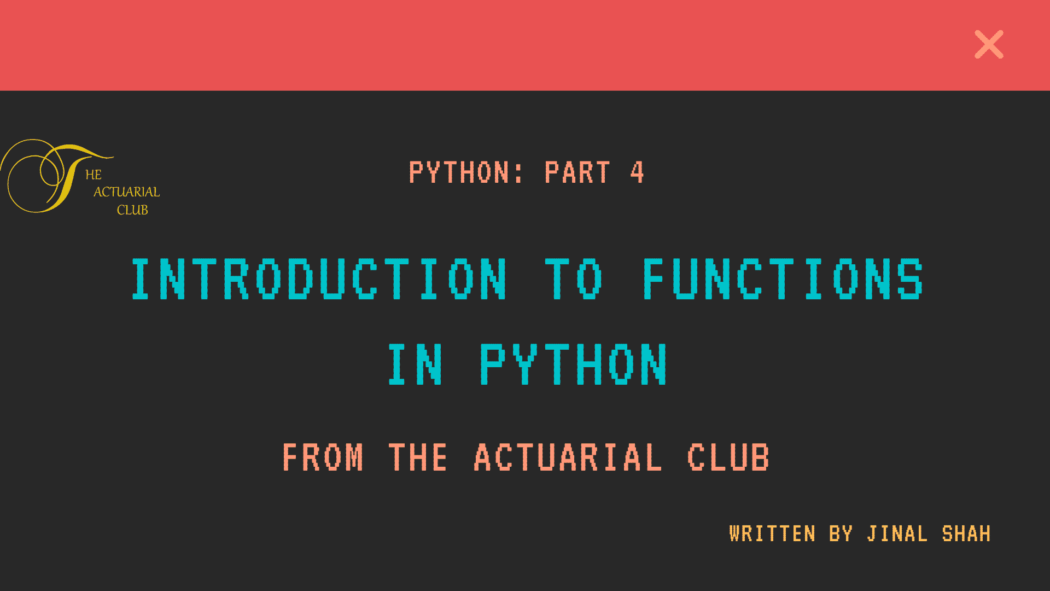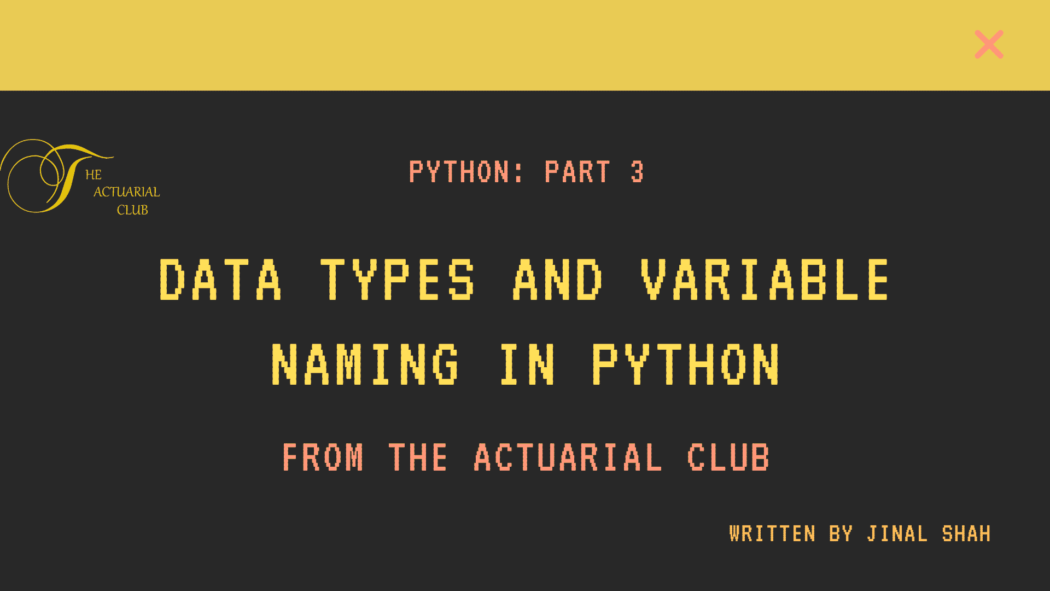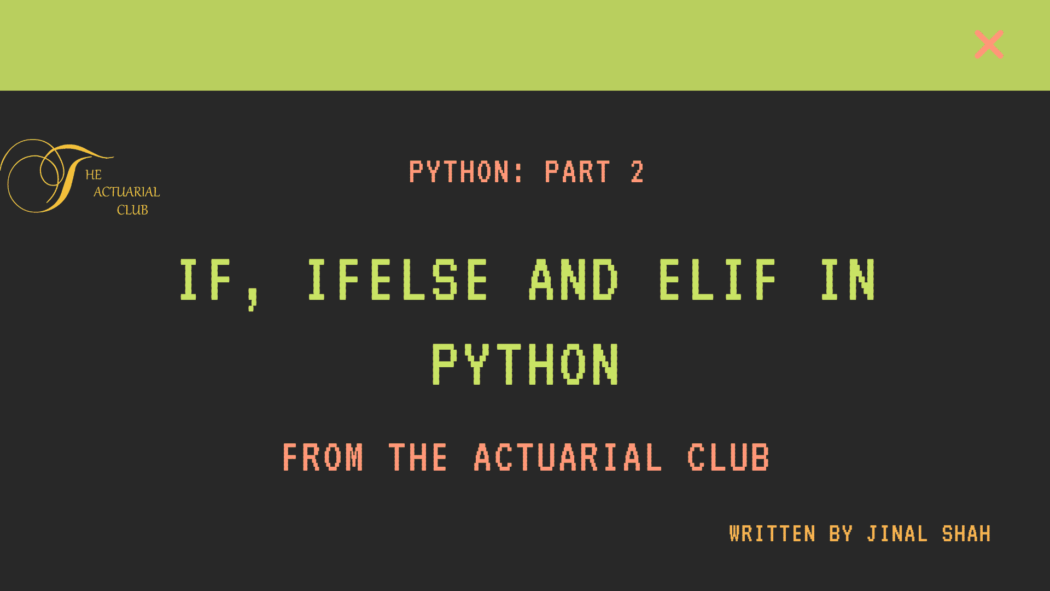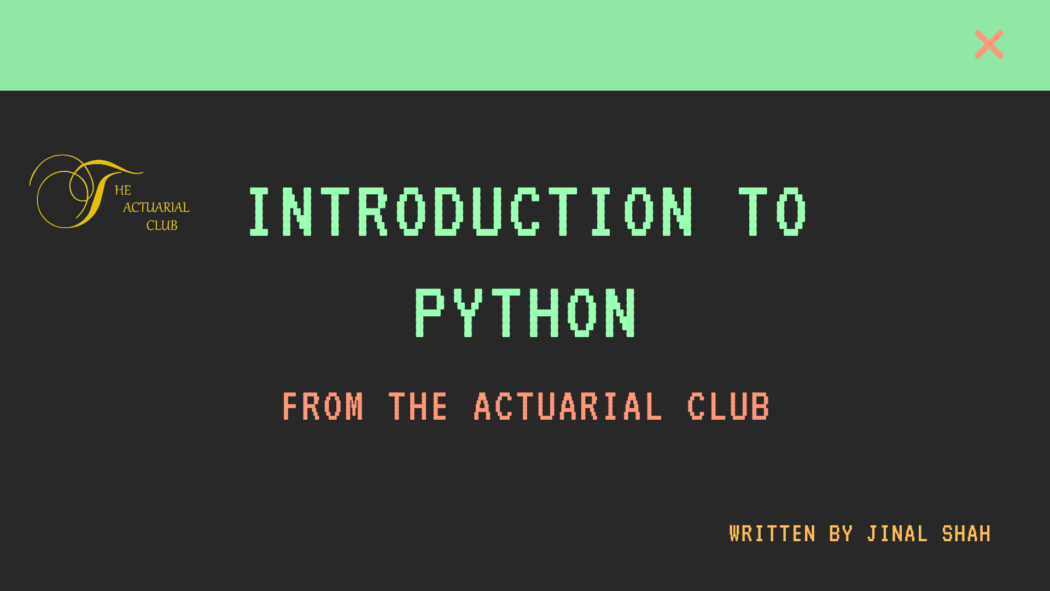Usually, while storing the data in a variable we store a single value, for example, x = 5. With the help of Lists in Python, we can store multiple values …
Loop Control Statements in Python
Loops in Python are used to execute a block of code iteratively for a number of times or until the list is exhaustive. But sometimes, in this form of execution, …
Loops in Python
Python statements are executed sequentially in any code, however, sometimes we wish to iterate a particular piece of code repeatedly. To attain this we use, Loops in Python. The Loops …
Tips for Young Actuaries by Tan Suee Chieh (IFOA President)
The President of Institute and Faculty of Actuaries (IFOA), Tan Suee Chieh, has shared with us the sixty-one tips for young actuaries which he has distilled from his sixty-one years …
Introduction to Functions in Python
Sometimes, while working we need to use a particular piece of code again and again by changing a few inputs or values. Due to this reason of reusability, we use …
Data Types and Variable Naming in Python
Data types in Python We store data in different formats and therefore, it becomes important for us to know the type of our data. It helps us in performing different …
Conditional Execution using If, Ifelse and Elif in Python
Many times, in programming, we need our programs to execute a particular part of code depending upon certain conditions. This is called conditional execution. The function is mostly performed using If, Ifelse and Elif in python.
Introduction to Python
Python is an open-source, high-level programming language created by Guido Van Rossum and first released in 1991. Python is rapidly becoming the go-to language due to its ease of writing …



